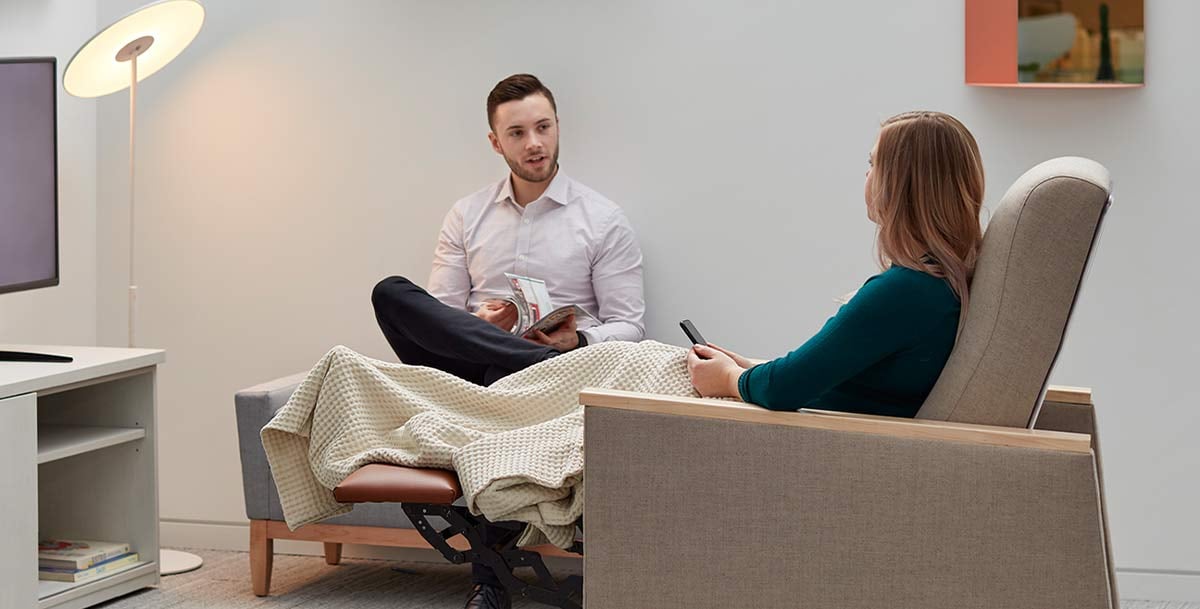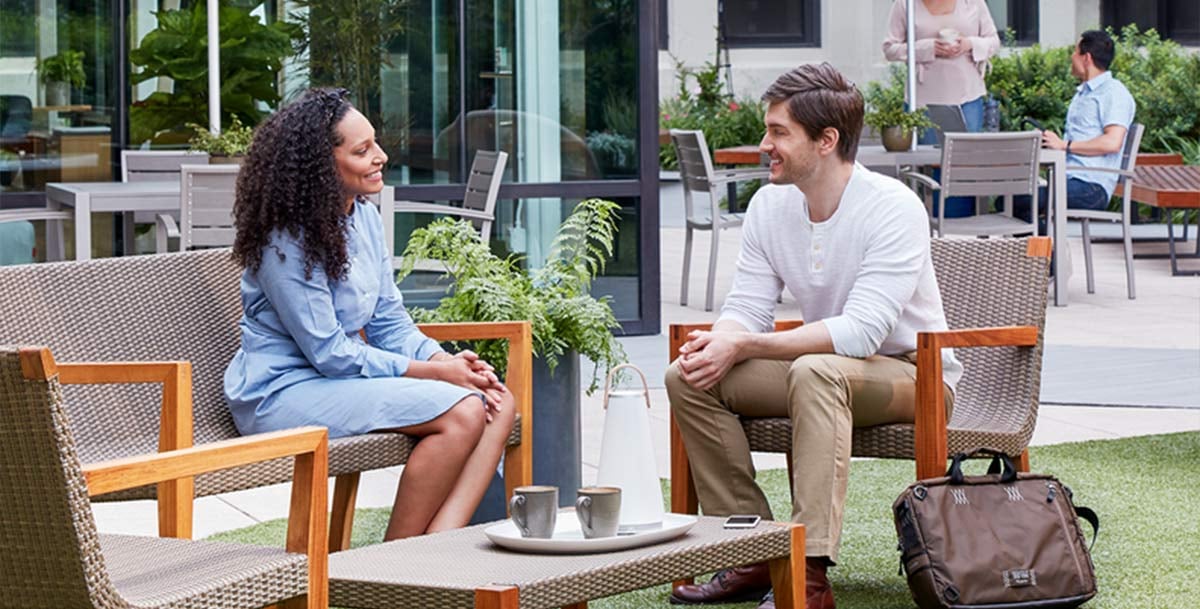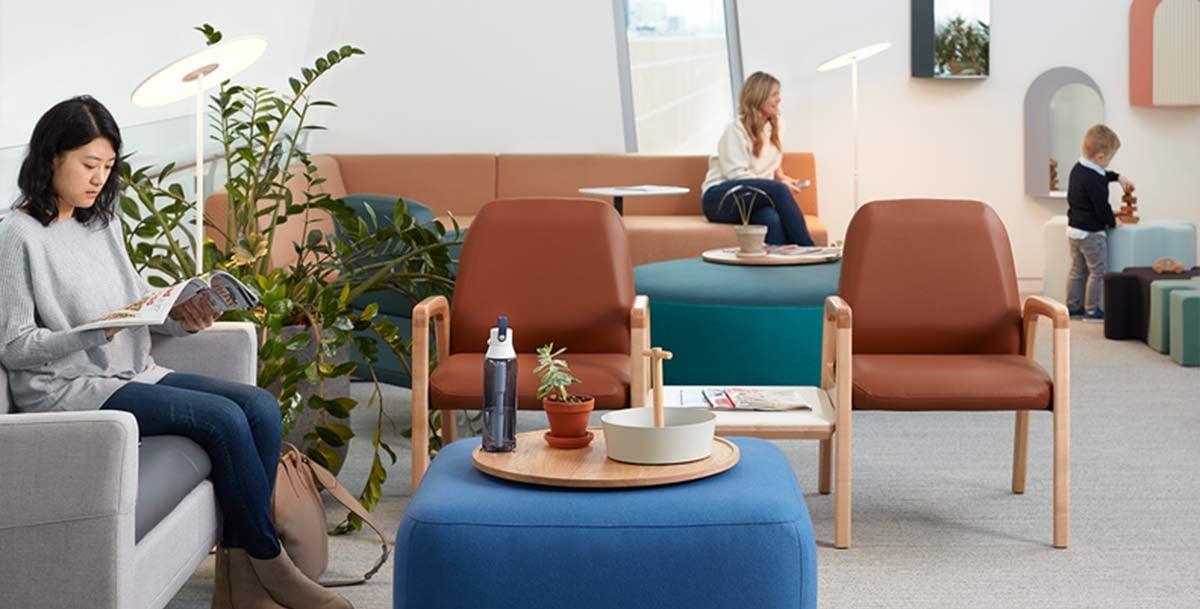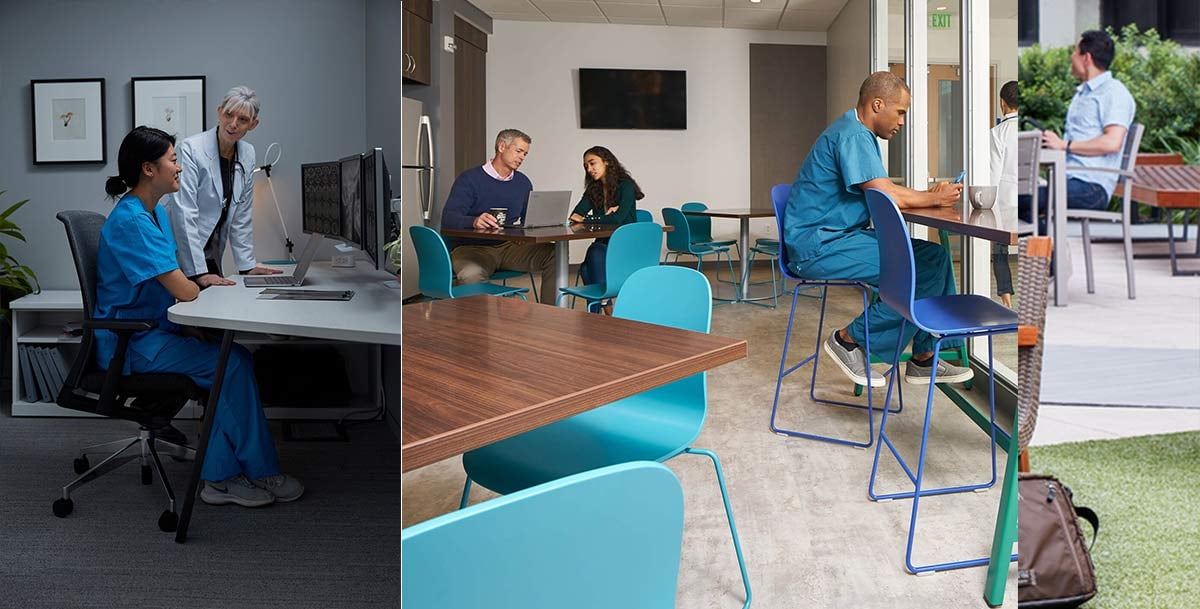Healthcare environments are unique spaces designed for healing and productivity. Outside industry influences, and now pandemic conditions, are broadening the boundaries of what was once considered best practices in healthcare environments. As the pandemic pushes hospitals and other healthcare organizations to the breaking point, the timing may seem off for a “luxury” musing like hospitality. Right now, media images of hospitals evoke the desperation of a global health crisis, hardly the time for “concierge” considerations.
However, hospitality isn’t just soft robes and comfy couches; it’s serious business. And the strategies around successful hospitality are no longer an optional pursuit for hospitals and other healthcare practices.
Nowadays, healthcare designers, architects, and executives recognize that hospitality impacts not only a hospital’s bottom line; it also affects patient recovery. Indeed, as more data supports the importance of hospitality in healthcare, hospitals have brought on hotel execs from leaders like Ritz-Carlton and Marriott to help them shift their organizational cultures.
Healthcare is being reshaped by the hospitality industry in ways that are changing everything about patient perceptions and expectations.
Here are the 4 tectonic shifts towards hospitality that are fundamentally altering the healthcare landscape:

Shift #1: It’s all about the patient experience
Once upon a time, the “patient experience” in hospitals meant ensuring that a patient left the building alive, and as quickly as possible. Now, patient preferences and choices are revolutionizing how hospitals cultivate the experience of patients under their care.
In the hospitality world, everything revolves around the guest experience. It’s why leading hotel brands have created a new role in recent years: Chief Customer Experience Officers, or Chief Customer Officers.
At a hotel, every single aspect of the organization connects to the guest experience – from booking to check-out.
Similarly, the refining and importance of the patient experience has paved the rise of a recent role at healthcare organizations – the Chief Experience Officer (CXO). As the hospitality industry has evolved, patient tastes have, too. Now patients expect more; they want their own experience to be welcoming and pleasant. They want to feel soothed and comforted, with the kind of amenities and little touches that hotels have long honed to perfection. (It’s no accident that mints on your hotel pillow are still a thriving practice, some 70-ish years after the idea first took hold.)
A key lesson that healthcare has been absorbing from hospitality is that every nuance of your operation can help to foster a positive (or negative) patient reaction.
Myriad touchpoints go into the patient experience. It’s not just the obvious consumer elements, but also more intangible qualities like transparency and accountability. A key lesson that healthcare has been absorbing from hospitality is that every nuance of your operation can help to foster a positive (or negative) patient reaction. Just as all aspects of a hotel’s operation affect the guest experience, every impression of a healthcare visit connects to the overall patient experience.
Ultimately, a positive patient experience is driven by confidence. One CXO describes it this way: “We work together to help our patients feel that they are in good hands — that they are safe, cared for and surrounded by a highly competent team.”
Design is one of the key elements that drives this feeling of confidence, and a positive patient experience overall. Especially during a time of monumental crisis, like now, design helps reduce stress and signals that safety protocols are in place. Steps such as placing concierge services with signage at patient entry points can set a tone that bolsters confidence and minimizes anxiety.

Shift #2: Healthcare companies are striving to be a patient’s first choice
Over the years, the healthcare industry has become far more competitive, especially as healthcare costs have dramatically increased. As such, patients have more choices and have become savvier and more discriminating customers. Increasingly, hospitals have come to recognize that they are, of course, commercial entities. Patients are their consumers and healthcare practices must actively compete for their business.
One of the strongest ways that healthcare organizations can compete is through the patient and visitor experience. As such, healthcare practices are putting more emphasis on creating a positive experience, appealing to patients as their first choice and doing whatever they can to earn the loyalty of their patients.
The competitive healthcare landscape is influenced by trends in the hospitality industry. Medical tourism was big business leading up to the pandemic, as was the merging of proactive health and wellness. The blending of healthcare with hotels has been driven by an interest in integrated wellness; industry leaders include One Farrer, described as Asia’s first hub for integrated health and wellness, and Six Senses, which promotes itself as the leader of a new age of integrative wellness.

Such aspirational influences are shaping how healthcare practices approach the patient-centric competitive landscape, one which is fully embracing hospitality. As the emergency of the pandemic subsides, these influences will undoubtedly resume as financial forces within healthcare.
Patient expectations are being shaped by these commercial trends. In the case of hospitals, competing for patient loyalty through a better experience not only leads to an increased patient base; it also can mean fewer penalties. Under the details of the Patient Protection and Affordable Care Act, how patients answer questions about their hospital stay correlates directly with the financial penalties incurred by a hospital. These penalties are based on a hospital's ranking in comparison to other hospitals, with patient surveys playing a major role in overall rankings.
Healthcare Services: Meet our specialists and learn more about healthcare services »
Striving to be a patient’s first choice takes the same kind of service mindset that drives hospitality. Past Plaza Hotel President James Lavenson famously articulated the tenets of this mindset in his classic 1974 speech on hotel sales, “Think Strawberries: Everyone Sells.” Delivered before the American Medical Association in New York City, Lavenson posited that while the sales department is not the whole hotel, the whole hotel is the sales department. He asserted that you have to love your product 100% before your customer will choose to participate in this love affair.
Is your healthcare practice creating an environment that employees and patients can love 100%? How can thoughtful design cultivate this love affair? (More on that shortly.)

Shift #3: Healthcare practices are building a culture of service and compassion
A positive patient experience, driven by a hospitality-like culture of service, delivers such profound impact that it has been shown to reduce infection rates and foster quicker recovery. It’s not surprising that lowering the anxiety levels of patients leads to higher patient satisfaction and retention.
But your patient experience is only as positive as your employee experience. Nurses set the tone for the patient experience, and their ability to provide for patients is fueled by an environment that is compassionate to their needs, too.
As such, healthcare organizations have been absorbing not only how hotels retain customers, but also how they hold on to employees.

Lavenson’s speech to the AMA describes how business at The Plaza skyrocketed after he better aligned their culture with the needs of customers and employees.
“A number of years ago, I heard Dr. Ernest Dichter, head of the Institute of Motivational Research, talk about restaurant service. He had reached a classic conclusion: When people come to a fine restaurant, they are hungrier for recognition than they are for food. It’s true. If the maitre d’ says, “We have your table ready, Mr. Lavenson,” then as far as I am concerned the chef can burn the steak and I’ll still be happy.”
Patients want to feel catered to; they want to feel a sense of compassion about their situation. They want to feel recognized. This only happens when healthcare staff is operating within an organization that has made service a part of its very design. The steps towards compassionate care must be built into the literal fabric of healthcare settings.

Shift #4: Healthcare practices are designing for comfort
Healthcare design used to be an oxymoron. These settings were clinical, cold, and only focused on function.
Today, every other influence of hospitality leads to the critical importance of great design. Above all, hospitals and healthcare organizations now recognize that a positive patient experience is directly linked to patient comfort, and design carries a huge load in fostering a sense of ease.
The resimercial trend, which brings a home-like atmosphere into work and other settings, has become a defining influence in 21st-century office design. “Hygge,” the Danish term for coziness, has also strongly influenced the hospitality world, and, in turn, is influencing healthcare.
The yearning for warmth is why boutique hotels look like nice homes, and vice versa.
The design distinctions between home and work were already blurred before the pandemic forced people into working from home.
The design distinctions between home and work were already blurred before the pandemic forced people into working from home. Now, homey design trends take on a new meaning, with the comforts of home evoking not just relaxation, but safety.
Healthcare design must therefore consider additional ways to make patients feel “cozy” through peace of mind. Furniture and design can reinforce safety with choices like lounge seating with adjustable spaces and tables between seats.

Healthcare is facing a turning point. The pandemic is testing the limits of the industry’s ability to meet the needs of patients, which makes smart design an ever more critical support tool. Amidst the near-term health crisis and the longer-term recovery, healthcare must continue to take the lead of hospitality, designing a positive consumer experience that earns patient loyalty for years to come.
Meet our healthcare specialists to schedule a meeting or get a quote




